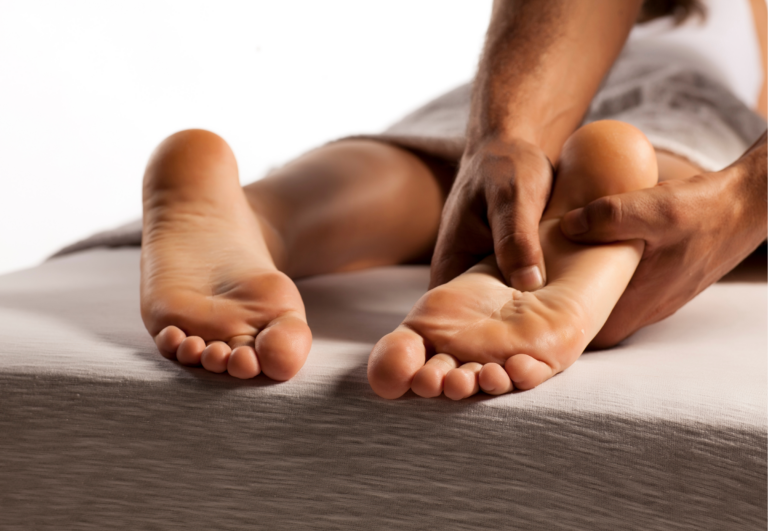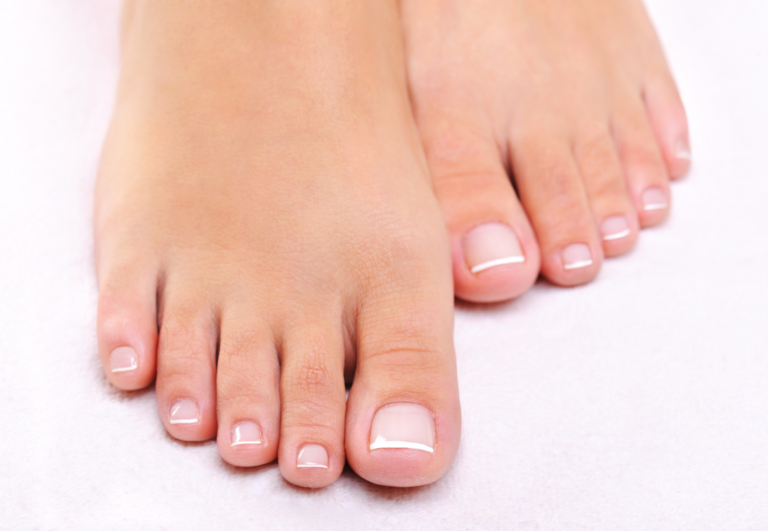Are Toe Spacers Suitable for Children or Only for Adults? Understanding the Age-Appropriate Use
Toe spacers, devices designed to realign and maintain the proper position of toes, are widely used by adults for a variety of foot-related discomforts and conditions. They come in different forms, such as foam strips or individual gel pillows, serving the purpose of easing pressure and promoting foot health. In my experience with these tools, they can be particularly beneficial for adults with issues like bunions, overlapping toes, or for recuperative care following foot surgery.
When it comes to children, however, the use of toe spacers should be approached with caution. The feet of children under the age of 12 are still developing, and any intervention could impact this natural process. If a child is experiencing foot pain or has a specific condition, it’s crucial for their guardian to consult with a pediatrician or podiatrist before introducing toe spacers. This ensures that any use of toe spacers in children is safe and appropriate for their unique developmental needs.
While adults can often self-prescribe toe spacers based on discomfort or doctor’s recommendations, for children, professional medical advice is key. It’s essential to consider each child’s individual situation, as some may benefit from the corrective positioning offered by toe spacers, while for others, these devices may not be necessary or could even impede natural foot growth. As a rule of thumb, safe and informed use under medical supervision should guide decisions regarding toe spacers for both adults and children.
Are Toe Spacers Suitable for Children or Only for Adults?
Toe spacers can be suitable for both children and adults, with considerations for each age group:
- Children’s Foot Development: Children’s feet are still developing, and toe spacers may assist in maintaining natural toe alignment, especially if they have been wearing narrow or restrictive shoes.
- Size and Comfort: Toe spacers for children should be appropriately sized to fit smaller feet and made of soft, flexible materials to ensure comfort.
- Corrective Measures: In cases of toe overlap or other mild deformities, toe spacers can be used as a corrective tool to help guide the toes into a more natural position during the growth phase.
- Potential for Quicker Response: Children’s feet may respond more quickly to corrective measures such as toe spacers, potentially reducing the need for long-term use.
- Consult Healthcare Professionals: As with any orthopedic device, it’s advisable to consult with a pediatrician or pediatric podiatrist before having a child use toe spacers to ensure they are appropriate for the child’s specific needs.

Toe Spacers and Their Purpose
In this section, we’ll explore what toe spacers are and their role in maintaining foot health. Toe spacers, often made of silicone or gel, are beneficial for pain relief and realigning toes to promote better circulation.
What Are Toe Spacers?
Toe spacers, also known as toe separators, are devices designed to fit between the toes. They’re made from materials like silicone or gel, ensuring comfort and flexibility. People use toe spacers to create space between their toes which often become crowded due to tight footwear.
- Materials: Silicone, Gel
- Purpose: Creating space between toes
The Role of Toe Spacers in Foot Health
The primary role of toe spacers is to help realign the toes to their natural position. By doing so, they can improve circulation in the feet and potentially provide pain relief from various foot conditions. The benefits of using toe spacers include:
- Realigning toes to prevent and address deformities
- Improving circulation within the foot
- Providing pain relief
Consistent use of toe spacers can be a straightforward tool for maintaining or enhancing foot health.
The Suitability of Toe Spacers for Different Age Groups
Toe spacers can be beneficial for both children and adults, but considerations around foot growth and development are key when determining their suitability for each age group.
Toe Spacers for Children
Toe spacers are designed to realign the toes to a more natural position, which can be particularly beneficial for children as their feet are still developing. It’s essential to choose toe spacers that are specifically sized for children to prevent any interference with their growth. The use of toe spacers for children should be done under adult supervision, and it’s recommended to consult a pediatric podiatrist to ensure safety and proper usage.
- Considerations for Children:
- Proper sizing: Ensure spacers fit well; too large can hinder growth, too small can cause discomfort.
- Usage time: Limit to short periods to prevent dependency or discomfort.
- Supervision: Always have an adult present while a child is using toe spacers.
Toe Spacers for Adults
Adults can use toe spacers to address a variety of foot conditions, including bunions and hammertoes, or simply for comfort after a long day on their feet. Unlike children, adults have fully developed feet, which makes sizing easier.
However, it’s still important to choose the correct size to avoid any potential harm or discomfort. For first-time users, it’s advisable to start with shorter periods of use and gradually increase as the feet adjust to the spacers.
- Considerations for Adults:
- Foot condition: Spacers can help with certain adult foot conditions; consult a professional if unsure.
- Adjustment period: Gradually increase usage time to allow feet to adapt.
- Comfort and fit: Picking the right size ensures benefits are maximized without sacrificing comfort.
Material and Design Considerations for Toe Spacers
When selecting toe spacers, it’s crucial to consider the materials and design features that contribute to their effectiveness and comfort. These aspects directly impact their suitability for various foot shapes and conditions.
Materials Used in Toe Spacers
Silicone is commonly used for toe spacers due to its durability and hypoallergenic properties. Unlike foam and gel, silicone can maintain shape and resist wear over time. Medical-grade gel, often used in higher-quality toe spacers, ensures a higher standard of safety and comfort without irritating the skin.
- Popular Materials:
- Silicone: Durable and hypoallergenic.
- Foam: Soft and cushioning, but less durable.
- Gel: Comfortable but may degrade faster than silicone.
Design Features for Effectiveness and Comfort
The design of a toe spacer determines its ability to correct alignment while being comfortable enough for everyday use. Toe spacers come in various shapes like loops or straight separators, each suited to different toe configurations and conditions. A well-designed toe spacer should fit snugly between the toes without causing additional pressure.
- Essential Design Features:
- Snug fit: Secure but not overly tight.
- Varied shapes: To accommodate different toe alignments and needs.
- Ease of cleaning: For maintaining hygiene with regular use.
Benefits and Limitations of Toe Spacers
Toe spacers are designed to assist with various foot conditions, offering health benefits and improving foot function. In this exploration, I will highlight their roles in addressing toe and foot issues and discuss the necessary precautions.
Health Benefits for Toe and Foot Problems
Toe spacers are valuable tools for supporting foot health. They provide several benefits:
- Reduce Pain: They alleviate pressure, which can reduce foot pain stemming from overlapping toes, plantar fasciitis, and more.
- Correct Alignment: By promoting the proper alignment of toes, they can aid in the treatment and prevention of bunions and hammertoes.
- Prevent Toe Problems: By reducing friction, toe spacers can prevent the development of calluses and corns.
Table: Health Benefits of Toe Spacers
| Benefit | Description | Relevant Foot Condition |
|---|---|---|
| Pain Relief | Alleviates pressure and discomfort in the foot. | Plantar fasciitis |
| Alignment Correction | Promotes natural toe alignment to aid in treatment and prevention. | Bunion, Hammertoe |
| Prevention of Skin Problems | Minimizes friction, preventing calluses and corns. | Calluses, Corns |
Potential Limitations and Precautions
While toe spacers offer many benefits, they have limitations:
- Temporary Solution: They are best used as part of a comprehensive foot care strategy, not as a standalone solution.
- Proper Use: Incorrect use of toe spacers could potentially cause further issues. Consultation with a podiatrist is recommended.
Here are some precautions and limitations to keep in mind:
- Supervision for Children: Children’s feet are still developing, so the use of toe spacers should be supervised, and their sizes adjusted accordingly.
- Medical Advice: Always seek medical advice for persistent or severe foot problems before using toe spacers.
Bullet List: Limitations and Precautions
- Not a cure-all; require complementary foot care practices.
- Proper sizing and use are crucial to prevent additional problems.
- Podiatrist consultation is advisable for best results.
By understanding these benefits and limitations, users of toe spacers can more effectively manage various toe and foot conditions.
Selection and Use of Toe Spacers
When selecting toe spacers for children or adults, it’s crucial to choose the right size and material for comfort and proper alignment. Consistent and proper use is essential for recovery and general foot care.
Choosing the Right Toe Spacers
Sizing: Ensure that the toe spacers fit the user’s feet correctly. They should not be too tight or too loose; a snug fit is ideal to maintain proper alignment without causing discomfort.
Materials: Look for toe spacers made from soft, flexible materials such as silicone or gel. These materials provide comfort for longer periods of wear.
Best Practices for Using Toe Spacers
Usage: Start with shorter periods of wear and gradually increase as the feet adjust to the toe spacers. Consistent use is often recommended for best results.
Consultation with a Podiatrist: If there are any pre-existing foot conditions or if pain is experienced, it’s advisable to consult a podiatrist. They can provide tailored advice for using toe spacers as part of a foot care routine.





